Not just a Cemetery but a tribute to bravery and dedication for men and women from all over the world, civilians and military.
In the last blog entry I described a short walk from Hamble to Royal Victoria Country Park to visit the beautiful Royal Victoria Chapel Restoration .
But there is actually another point of interest on this walk, and although the thought of a cemetery may not be everyone’s idea of a nice day out, I can assure you that this one is both beautiful and poignant, and lends itself well to a quiet walk, or a relaxing place to sit and chill out.
So how d’you get there? Well, based on my last blog (short walk from Hamble to Royal Victoria Country Park) the route to the cemetery is halfway along the route, as marked on the map below (courtesy of Ordinance Survey Map OL22:
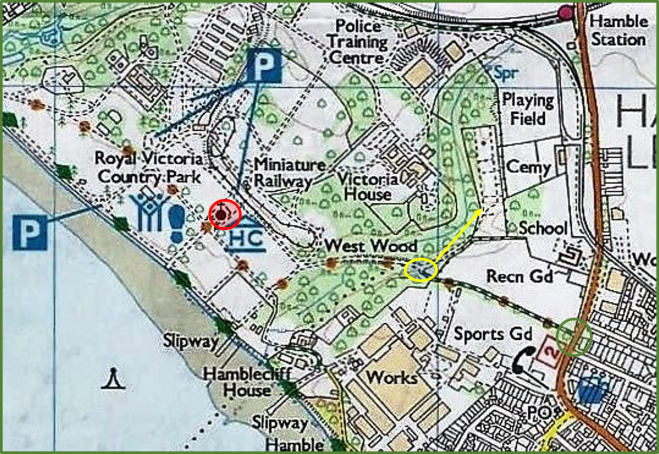
The Green circle lower right (south-east) shows the start point on Hamble Lane, the red circle middle left (north-west) shows the Chapel, and the yellow circle in the centre shows where the path sharply diverges to lead to the cemetery, the yellow arrow shows the direction (roughly north-east) to take down the path (it does actually slope downwards) to reach the cemetery.
If you are walking from Hamble towards the Chapel you will find a sharp right turn about halfway along your journey. If you are coming back from the Chapel, then you will see a fork in the path, with the path to the cemetery to the left, and the path back to Hamble going slightly uphill to the right.
The path to the cemetery is broad and slopes downhill with the occasional low concrete marker post along the edge, numbered, and showing the boundaries of the Military land with the “Broad Arrow” of the Royal Ordnance on them. (Sounds like a metaphor for life eh? A Broad Path, going downhill, with the odd marker along the way?)
At the bottom of this broad path you will come to an old gate, and some fencing along the side aimed at keeping the local deer out (although whether this is successful or not is hard to say).
Once you are in you will see a grassy Knowle to your right with a group of grave stones, including a number belonging to Polish Soldiers.
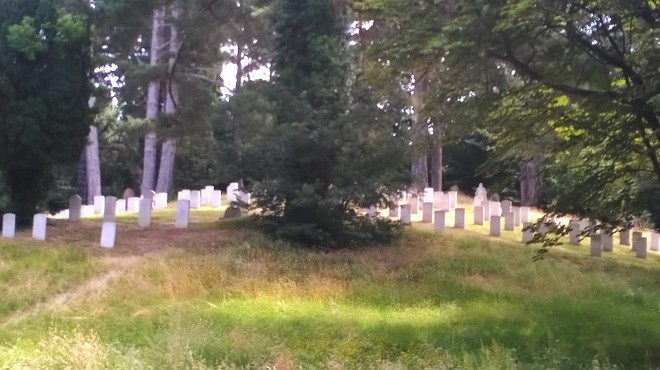

One of the min parts of the graveyard, along a path and uphill from this little shady mound, is the open area that contains most of the soldiers who died in WW1, this area is marked by a suitable memorial cross.
There are people from a wide number of nations buried here, although the majority are British, there are also members from all the Countries of the Commonwealth, particularly Australia, Canada, New Zealand, and South Africa.
Perhaps surprisingly The Hospital dealt with many German POWs who were wounded, and some of them lie in graves represented with pointed stones in the graveyard, easy to spot among the rounded tops of the British stones, and nice to see a degree of respect for men, although the enemy at the time, who fought for their country. Lying together on a quiet Hampshire hillside.
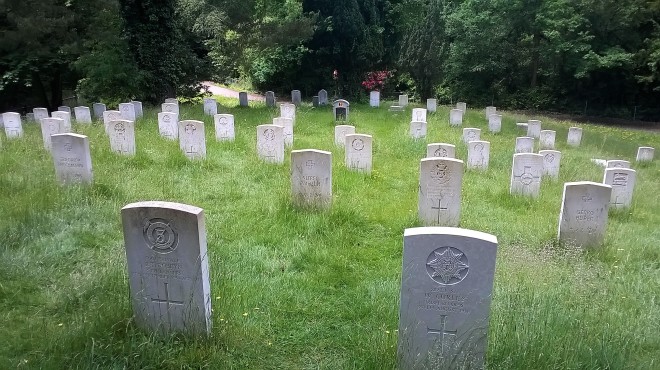
Off a path on a small secluded piece of land sloping away from a large shady fir tree are a small group of stones for Belgian soldiers who were wounded defending their homeland in WW1 from the invading Germans, were shipped by steamer to Netley, and subsequently died and were buried in this little part of Hampshire. Framed in the sun by the mauve Rhododendron flowers.
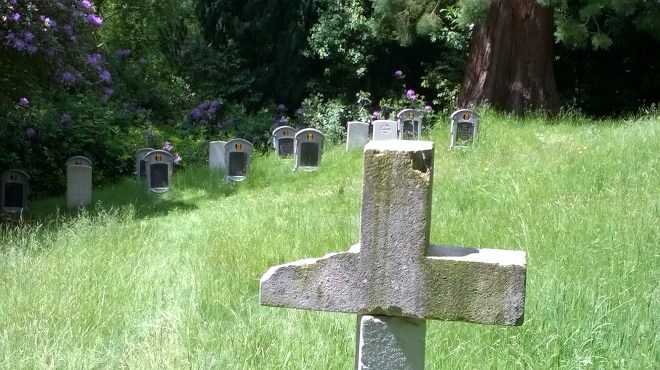
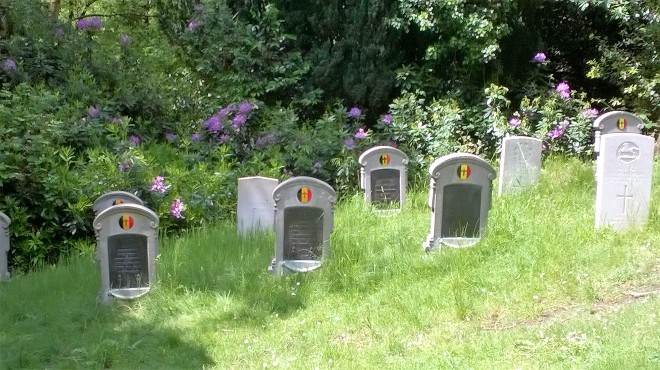
If you take time to wonder around the graveyard (not as macabre as it sounds, albeit if you chose a sunny day for it) you will find many curiosities, including civilian graves, and the stories of nursing staff who served here, including a Japanese Doctor.
Below are just two of the interesting cases. The first is E. Mbenyesi a Private in the South African Labour Corps, who died on 26th August 1917. Thousands of Labourers came from all over the Empire to support the Motherland in the conflict with Germany in WW1, many never returned home. Without these men digging trenches and moving supplies in their work to support the front line troops, the Germans could never have been stopped in their march across France and Belgium. How “native” volunteers from countries like South Africa survived in the harsh winter conditions in the European conflict is amazing, and a testament to their bravery. The was the son of Mkatali and Mampinga, and the husband of Mantsaka.

The next is an interesting stone, and a reminder of conflicts nearer to our own time, and the only Jewish grave stone in the cemetery. In this case a Jewish soldier named E. Nirke a Serjeant in the Intelligence Corps. Eugene Nirke is a bit of a riddle, he seems to have been brought up in Shanghai China with his father Jacob, who later moved to Israel. Eugene served in the British Army and fought against the Japanese invasion of Burma. He seems to have suffered from some form of illness or injury, and was moved from active service in the front line to the British Intelligence Service in India in 1945. He turned up in Russia in 1947, and took British citizenship. In 1950 he was shipped to the sanatorium at Netley Hospital where he died. Is it just possible that Eugene was a British Spy in Soviet Russia?
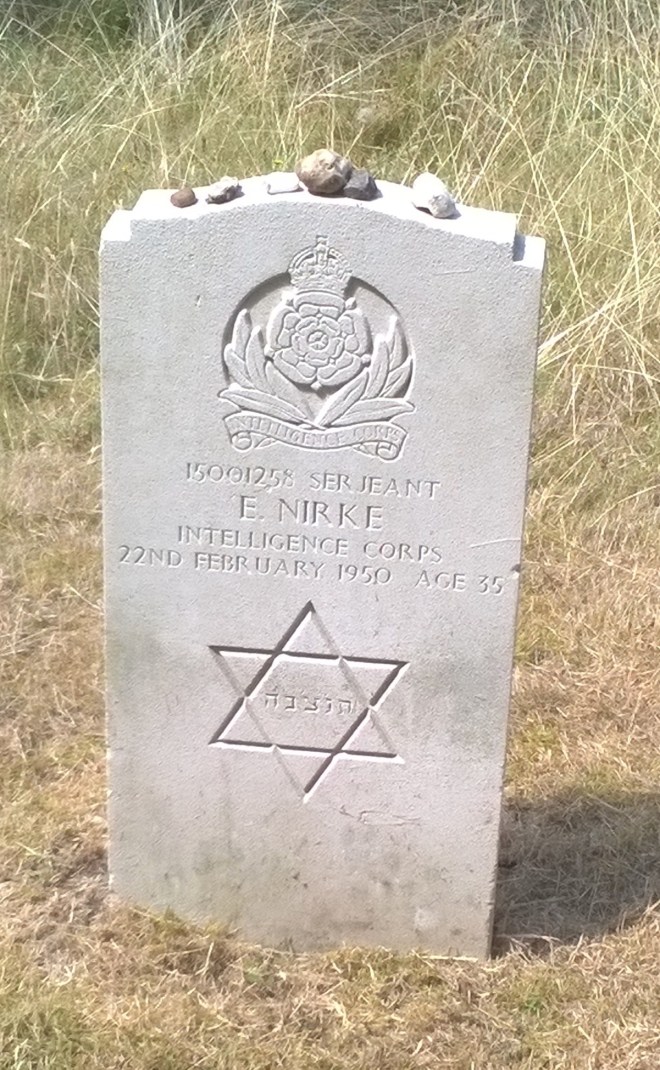
Note the small stones placed on top of his stone as a mark of respect. Although I’m a confirmed atheist, we did place a small pebble there ourselves, as a mark of respect for his sacrifice. Maybe not all spies get the publicity of a James Bond?
Not all soldiers who died at Netley were buried there. Some of the Indian fallen were cremated on purpose-built pyres according to their religious customs, their ashes then sprinkled into soft brown Hampshire streams that cross the site in times of rain, and carried their remains down to the Solent mixing with the clear water of the trout streams of the Test and Itchen, before being joined by the rich waters of the Hamble and then out into the sea to join their ancestors.
Others were transported away by Governments (in the case of US Troops), or by relatives. One such case was a man called Clement Kray, who died at Netley Hospital in 1915. A member of the Honourable Artillery Company, and an East End Cockney, Clement was the Great Uncle of the Kray Twins, he was the second member of the family to have been in Netley, you can read their story here:
The Kray Family on the Hamble Peninsula
So, if you are going to RVCP to see the chapel make sure you walk the short distance to the Cemetery as well, it’s a lovely quiet place, and well worth the small effort involved. With many stories beyond the ones I’ve mentioned here.
